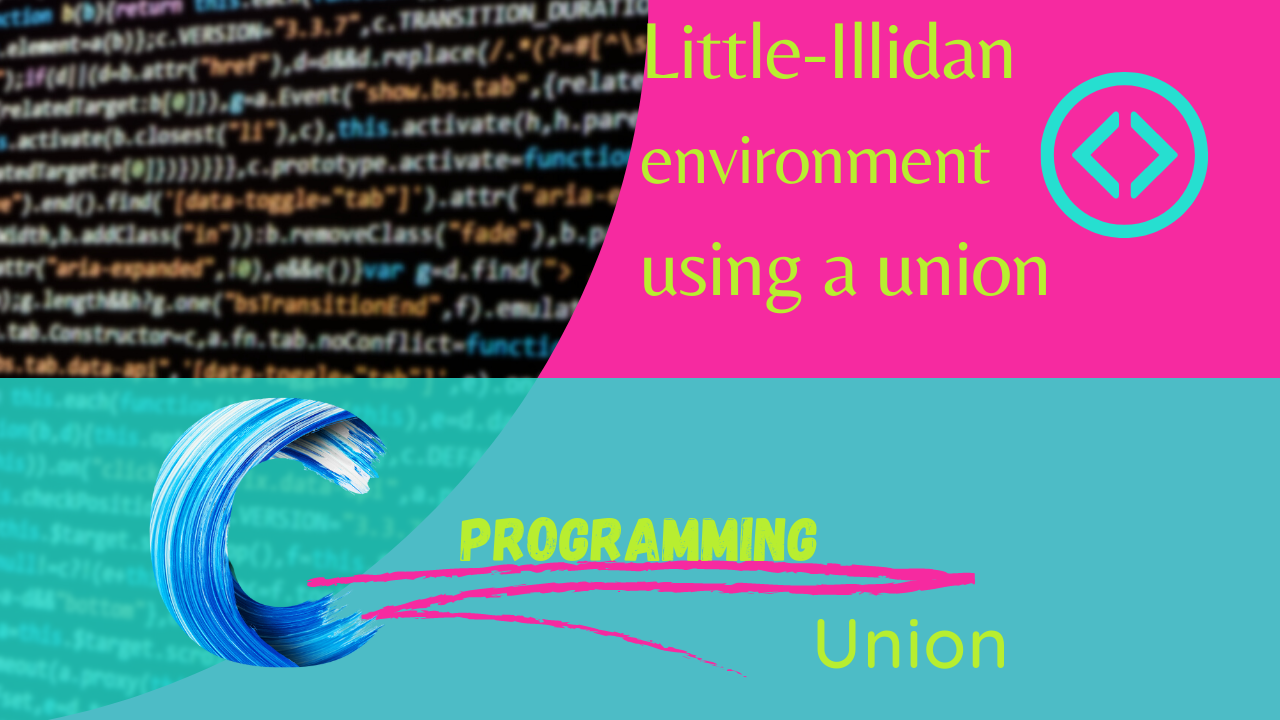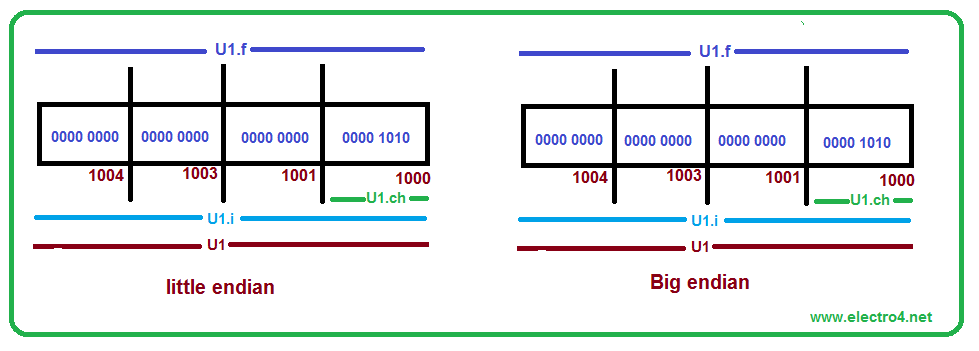
Write a C Program to prove we are working on little Endian environment using a union
Verifying Little Endian Environment with a Union in C
"writing a C program to prove we are working on a little-endian environment using a union" means creating a program in the C programming language that determines whether the computer it is running on is little-endian or big-endian.
In computing, endianness refers to the way in which bytes are ordered in a multi-byte data type, such as an integer. Little-endian means that the least significant byte is stored first, while big-endian means that the most significant byte is stored first.
The program will use a union, which is a special data type in C that allows two or more variables to share the same memory location. By assigning a value to one member of the union and then checking the value of another member, we can determine the byte order of the system.
Prove we are working on a little Endian environment using a union in c

To prove that we are working on a little endian environment using a union in C, we can write the following program:
#include <stdio.h>
#include <stdint.h>
union {
uint32_t i;
char c[4];
} u;
int main() {
u.i = 0x12345678;
if (u.c[0] == 0x78) {
printf("Little endian\n");
} else {
printf("Big endian\n");
}
return 0;
}This program works by creating a union that contains both a 32-bit integer and an array of 4 characters. The union is then initialized with the value 0x12345678.
On a little endian machine, the least significant byte (LSB) is stored first. This means that the byte values in the array u.c will be:
u.c[0] = 0x78
u.c[1] = 0x56
u.c[2] = 0x34
u.c[3] = 0x12On a big endian machine, the most significant byte (MSB) is stored first. This means that the byte values in the array u.c will be:
u.c[0] = 0x12
u.c[1] = 0x34
u.c[2] = 0x56
u.c[3] = 0x78Therefore, we can determine whether the machine is little endian or big endian by checking the value of u.c[0]. If u.c[0] is equal to 0x78, then the machine is little endian. Otherwise, the machine is big endian.
To compile and run the program, you can use the following commands:
gcc -o endian endian.c
./endianIf you are running on a little endian machine, the program will print the following output:
Little endianIf you are running on a big endian machine, the program will print the following output:
Big endianTop Resources
Little Endian and Big Endian in c
write a program to prove that we are working on big Endian using union
Write a Program to prove we are working on little Endian environment using a union
Write a program to prove we are working little endian or big endian using character pointer in c
Prove That We are working on Little Endian and Big Endian Using Character Pointer
Enroll Now:
[ C-Programming From Scratch to Advanced 2023-2024] "Start Supercharging Your Productivity!"
Contact Us:
- For any inquiries, please email us at [info@electro4u.net].
- Follow us on insta [ electro4u_offical_ ] for updates and tips.
Note: If you encounter any issues or specific errors when running this program, please let me know and I'll be happy to help debug them!

